Gen Z Prefers Cash for Financial Management and Privacy
In a time of rising inflation and economic uncertainty, Gen Z is leading the way with increasing cash use to improve financial control, with 69 percent using more cash now than 12 months ago, and 23 percent making most of their purchases with banknotes and coins.
A survey of 2,118 American adults, conducted by The Harris Poll, shows people born 1997–2005 are the group most likely to be raising their cash use, driven by factors including a greater sense of control, and being more thoughtful with their spending when paying with physical money. They are followed by 47 percent of Gen X (1965–1980) and 37 percent of Boomers (1946–1964) who are also using more cash now than previously.
Cash provides a tangible and visual representation of financial resources, allowing people to set aside specific amounts for different categories of expenses. The popular budgeting strategy known as ‘cash stuffing’ is built around this concept, with money allocated each month to different categories such as rent, transport, groceries and other essentials plus—where possible—luxuries and savings. 70 percent of Gen Zers using cash stuffing say they’ve been able to lower their monthly spend.
In addition to more effective budget management, cash is also helping people to save. The survey shows 89 percent of Gen Z cash stuffers say they have been able to channel more money into savings.
A rising awareness of the implications of an unrestricted digital footprint is also seeing people of all ages turn to cash as a method of limiting the data recorded on their spending habits. Eric Mah, President of Gim Electric Co. in Chicago, explained to USA Today that he is an avid cash user.
The reason I use cash is it is simpler to budget… Cash allows me to feel in control of my daily expenses. My family have also been victims of stolen credit cards, counterfeit cheques, and stolen identities, so we try to keep our digital footprint at a minimum.
Many countries saw a sharp increase in circulating cash as the pandemic progressed, with many people withdrawing banknotes to hold as a store of value, and a reliable way to purchase essentials should cashless options be temporarily unavailable. Since restrictions were removed and consumer habits have normalised, cash use is seeing a comeback as people are using it more for daily payments.
These patterns underscore the vital importance of retaining cash in the payments landscape, and ensuring people can freely access and spend it. Alongside cashless options that offer their own benefits, cash is the most inclusive payment method. Its tangibility also offers unique reassurance in uncertain economic climates, and can help people better manage their incomings and outgoings. Embracing a diverse payment ecosystem—which preserves cash—is the best way to ensure everyone can choose the best payment method to suit their particular financial needs and preferences.
